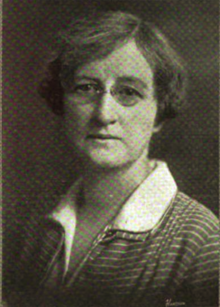Bureau of Home Economics

The Bureau of Home Economics, later known as the Bureau of Human Nutrition and Home Economics, was a division of the
History and leadership


The bureau has its roots in the Office of Home Economics at the USDA. Established in 1915, the office centralized USDA existing efforts around cooking and nutrition and other
During World War II, it was renamed the Bureau of Human Nutrition and Home Economics.[4]: 130
Economics of the Home
Among the projects in the Economics of the Home department, modern kitchen design and efficiency figured prominently. Since the early 1920s, the USDA studied how homemakers moved through their days and spent their time by equipping women with pedometers and having them keep time-use diaries.[1] The Bureau continued the studies, examining "various household tasks including cooking, washing, and child care".[5] These studies produced publications like Convenient Kitchens, a detailed bulletin with specifics about kitchen layout, work surfaces, equipment and food storage, ventilation, and lighting.[6]
Food and nutrition
With its roots reaching back to home-front conservation during World War I, the bureau was positioned to tackle the strains of the
See also
References
- ^ ISBN 978-0-06-221641-0.
- ^ "Smith-Lever Act". Act No. 7 U.S.C. 341 of May 8, 1914 (PDF). p. 13-1. Retrieved November 7, 2016.
- ^ Marsh, Emily. "Louise Stanley (1883–1954)". Apron Strings and Kitchen Sinks: The USDA Bureau of Home Economics. USDA National Agricultural Library. Retrieved November 6, 2016.
- ^ ISBN 978-1324004493.
- ^ Marsh, Emily. "History of the Bureau". Apron Strings and Kitchen Sinks: The USDA Bureau of Home Economics. Retrieved November 8, 2016.
- ^ Grey, Greta (1926). Convenient Kitchens. United States Department of Agriculture.
- ^ United States Department of Agriculture (1927). Aunt Sammy's Radio Recipes.
